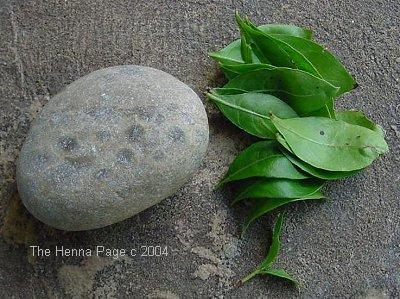 Find a henna plant with abundant leaves. Pick plenty! It takes a lot of leaves to make a little paste! 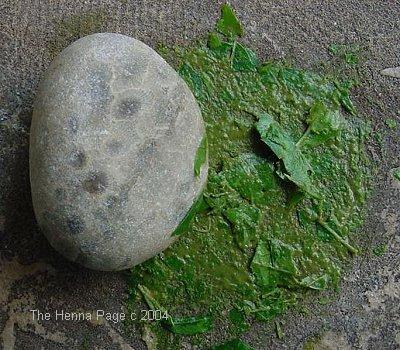 Firmly grind the leaves between a smooth rock and a flat rock, and add drops of lemon juice to smash the leaves into a paste. Be patient. Rub hard. Keep adding more leaves, and more drops of lemon juice until you have a little henna mush pile. 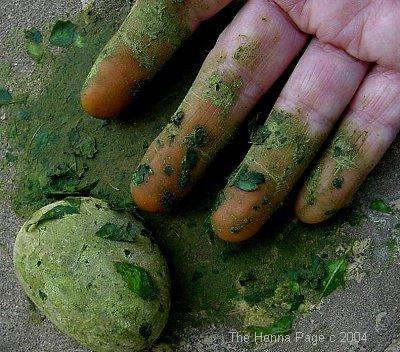 If you grind the henna leaves and lemon juice patiently, you'll get a gooey pulp that quickly stains the skin. This thick, uneven paste is not suitable for complex body art, except to make dabs and dots. It is good enough for a full palm or full sole dip, or solid fingertips. 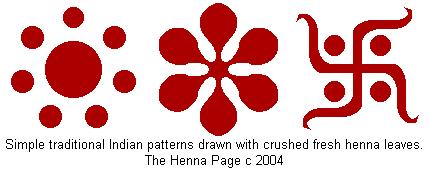 This henna guacamole can be made into a manageable paste for body art. First, strain the pulp through cloth as you would strain fruit pulp when making jelly or wine. Then, add any or several of the following to make a stringy, smooth goop: Simmer tamarind pulp into a
thick, sticky, sour liquid, and add that to the henna.
Dissolve hard sugar candy in lemon juice (the sort of candy that is just processed sugar with little or no flavoring, such as "rock candy"), and add that sticky liquid to the henna. Add sticky, slimy, stringy liquid from okra to the henna. If the stain seems weak, or if you want a more vivid red, add catechu to the henna. The techniques for working with this paste are very different from working with paste made from powder. These are very stringy pastes, and are meant to be applied with a wire or stick by drawing out threads of the gooey paste. Dip the toothpick into the henna, touch it to the skin, then pull out a line of goo and drape it onto the skin. (Imagine trying to draw with a toothpick dipped in honey, by getting a drop of honey on the toothpick, touching it to skin, then pulling the toothpick upward and away to make a thread ... then draping that thread onto the skin.) 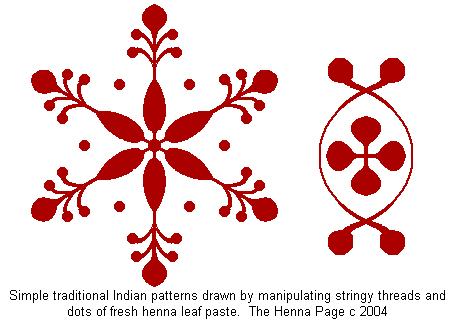 Some women are able to create patterns by dipping their index finger into the paste, touching their thumb to that, and making a line as they separate their thumb and forefinger ... and they drape those lines onto the skin. (Again, imagine dipping your index finger into honey, touching it to your thumb and making a honey thread by moving the fingers apart, then draping that line onto skin.) * Yes, the rock in the pictures above is
a fossilized plant from northeast Ohio. References:
Interviews with knowledgeable informants: S. Chowderry, 2002 Aunts of S. Ujla, 2004 "Art of Rajasthan, Henna and Floor Decorations" Jogendra Saksena Sundeep Prakashan, Delhi, 1979 Back to the index of the Encyclopedia of Henna Can't find what you're looking for? Try: The Henna Page Main Index http://www.hennapage.com/henna/mainindex.html *"Henna,
the
Joyous Body Art"
the Encyclopedia of Henna Catherine Cartwright-Jones c 2000 registered with the US Library of Congress TXu 952-968 |